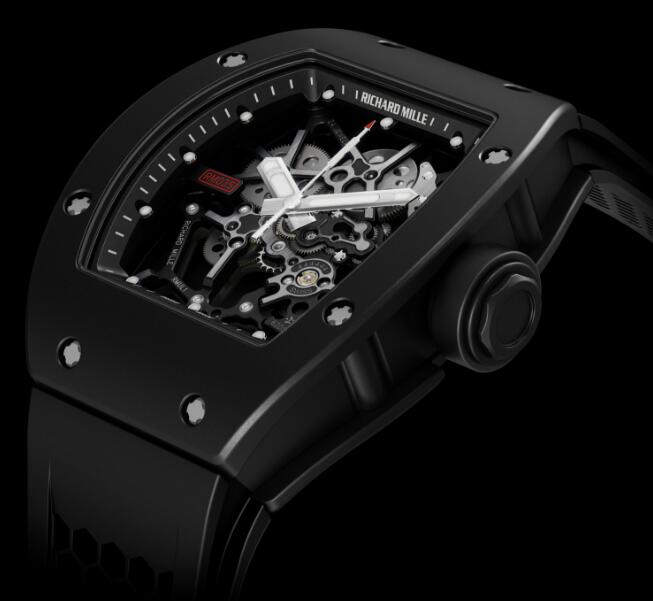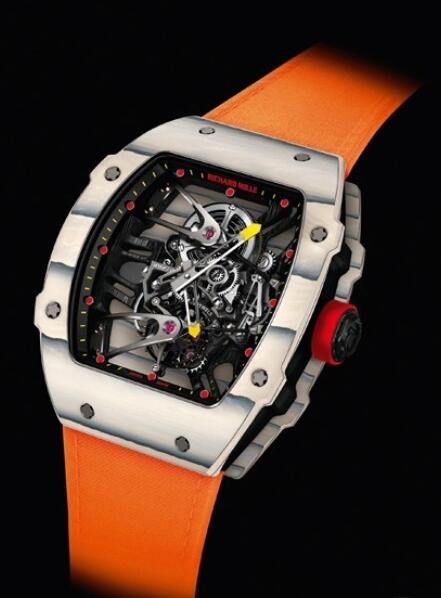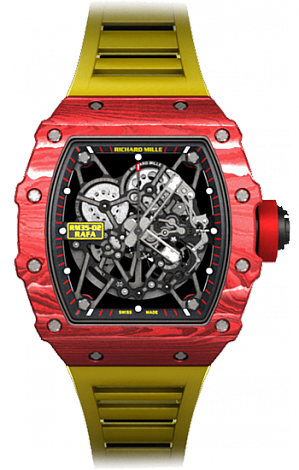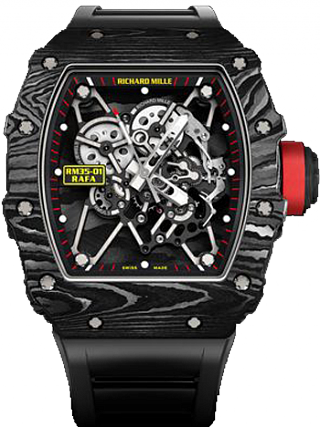
Rafael Nadal is the only tennis player in history who has won a Grand Slam championship nine times. Under normal circumstances, every year Richard Mille (Richard Mille) will show the latest evolution of the model dedicated to “Rapha” a few days before this major event French Open or Roland Garros (Roland Garros). This is The pilots are named after French pilots and World War I fighters.
The new Richard Mille (Richard Mille) RM 35-02 Rafael Nadal (Rafael Nadal) is the first watch in the series with a self-winding movement. Its distinctive feature is its lightness and durability. Shock.

Like its predecessors, from RM 27-01 with cable suspension movement to RM 27-02 with NTPT Carbon one-piece bottom plate, RM 35-02 Rafael Nadal is Richard Mille ( Richard Mille) a model of innovation.
Powered by the new RMAL1 movement, the bottom plate and bridge are made of wet sandblasted grade 5 titanium, and are PVD/Titalyt treated and stretched to ensure a smooth surface. Its variable inertia balance oscillates at a speed of 28,800 vph and is driven by a dual barrel system, providing a 55-hour power reserve.

Inspired by the RM 35-01, the RM 35-02 is designed to respond to customer requirements for the automatic winding device of the Nadal movement center. Richard Mille (Richard Mille) chose a patented variable geometry rotor that can adjust the windings according to the user’s activity level.
By adjusting the six position settings of the rib position, the inertia of the titanium rotor has been modified, speeding up the clockwork process under the smallest arm and hand movement, or slowing down the clockwork speed under the condition of strenuous exercise ( For example, when Rafael Nadal is playing) a game).

In another initiative of the Nadal series, the back cover is made of sapphire crystal glass for anti-reflection treatment, so that the caliber can be appreciated from all angles.
The 49.94 x 44.50 x 13.15 mm case of the new timepiece will use NTPT carbon fiber or the new bright Quartz-TPT Red with white highlights. Both cases have excellent biocompatibility, stability and resistance.
These materials consist of multiple layers of parallel filaments, which are obtained by splitting carbon fibers or silica threads. These layers (thickness no more than 45 microns) are impregnated with resin, then woven on a special machine, and heated to 120° under a pressure of 6 bar. At this point, the material is ready to be processed on a CNC machine in Richard Mille’s ProArt enclosure factory.